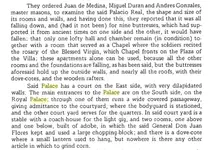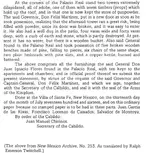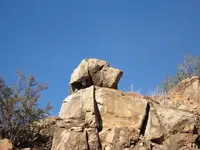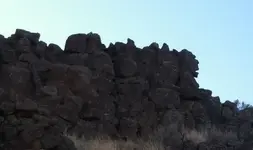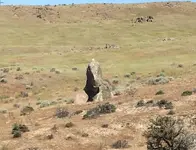There are plenty of petroglyphs in NM's lower Rio Grande Valley region that depict North African symbology, but it's impossible to date them conclusively. The best evidence I've seen is Mystery Mountain west of Los Lunas NM. The Decalog Stone low on the mesa is the obvious focus for most folks and its authenticity will be forever denied by academia, as is the case with all artifacts that don't fit The Narrative. IMO, the structural ruins on top of the mesa are more compelling. The site plan of the settlement up there strongly matches similar military encampment ruins found all over the Middle East. These are clearly not Anasazi-style "Indian ruins", and are rarely if ever discussed by pointy-heads.
I have two problems with pareidolia-based "ancient carvings" - heads, faces, animals, shadow-casters, et al. First, a construction operation that reshapes a mountain, even in ancient times, will leave evidence of the work, lots of it. There will be tool marks, exposed erosion boundaries, massive detritus accumulations, etc. I've seen nobody demonstrate any of this at any of the claimed sites.
With smaller objects, like carved heads or animals, the evidence should be even easier to find as the detail required should be clearly evident on the rock surfaces. I've only seen one example of a rock that was manipulated to look more like the object it appeared to be, and I found it and verified it myself. Tool marks and fresh exposed surfaces on this dog's ear, eye and snout proved to me that somebody enhanced it.
View attachment 1672015
Even though a rock may look like a familiar shape, nobody bothers to verify with even the slightest evidence that the thing isn't just another "looks like" rock, and there is certainly no shortage of those. Why not verify the claims? Because there is no evidence. When people start proving "carved rocks" or "reshaped mountains" are indeed enhanced, maybe the rest of us will begin to take them more seriously.
Second point. If these ancient carvers were so skilled, then why is the quality of their New World carvings so terribly shabby compared to the work they did back home in the Old World? The thousands-of-year-old carvings and inscriptions from ancient cultures worldwide is clearly manmade, beautifully and meticulously crafted, and obviously enduring. Yet, here in today's USA, we are shown vague rocks that sorta look like this or that, especially if you squint and use your imagination and are told that they are manmade. Why aren't they more clearly formed and detailed, and maybe even inscribed too? If beautiful carved monuments were good enough for Egypt, the Middle East and the Andes, why not the USA?






